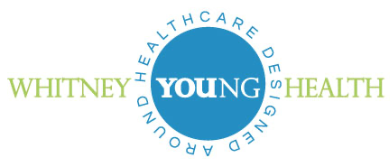
On this week’s edition of Myth Busters: National Nutrition Month edition, we have Molly Ward, RD, CDN, CDE, Whitney Young Health’s Registered Dietitian and Certified Diabetes Educator busting the myth that all sugar is bad for you, when it’s actually not.
—
Naturally occurring sugars are sugars that naturally exist in whole foods. Fructose is the natural sugar found in ALL fruit and lactose is the natural sugar found in animal sourced milk and milk products. Have you ever read the food label of skim milk and wondered why it says there are 10g of sugar in an 8oz cup? Now you know that milk contains 10g of naturally occurring lactose sugar.
Added sugars are sugars that are added to foods and beverages during processing, preparation, or at the table; they are not naturally part of the food. There are many types of added sugars, the most common are brown sugar, corn sweetener, corn syrup, dextrose, fructose, glucose, high-fructose corn syrup, honey, malt syrup, maltose, molasses, raw sugar, and sucrose. The major sources of added sugars in the American diet are soda, fruit drinks (Kool-Aid, fruit punch, juice cocktail, etc.), candy, baked goods, sugary sweetened cereals and desserts.
What’s the big difference?
Foods that contain natural sugars (fruit and dairy) also contain vitamins, minerals, fiber and protein. So, when you eat these foods you get important nutrients that your body needs. When sugars are added to foods and beverages they do not add any nutritional value, they instead add calories, which only promotes weight gain and obesity related conditions such as diabetes and heart disease.
Recommendations
1. Limit your intake of added sugars.
Tips:
- Read the ingredients list on packaged foods. Avoid foods that list added sugar(s).
- Do not drink sugar-sweetened beverages.
- Avoid or limit use of sugars in food and beverages. For example try using cinnamon instead of sugar in your coffee or oatmeal.
2. Eat a variety of fruit, in moderation.
Tips:
- One serving of most fruits is about 1 cup or a fruit the size of a tennis ball.
- “Eat a rainbow of fruits”- green, yellow, orange, red, purple, blue.
- If you are going to eat canned fruit choose varieties that say packed in 100% juice.
- Eat your fruit instead of drinking it (juice or smoothies).
3. Choose low fat dairy options if you choose to drink and eat dairy products.
Tips:
- Choose yogurts without added sugars, either read the ingredients our choose yogurts with less than 12g sugar (yogurts contain 8-12g of natural milk sugar).
- If you opt for alternative diary options like almond or soymilk, choose the unsweetened variations.
Did you know the Nutrition Facts label is changing?
The FDA has made changes to the Nutrition Facts label that will help you identify and avoid added sugars. The line for sugars on the old food label includes both added and natural sugars whereas the new food label identifies added sugar separately from total sugars. All food manufacturers are required to use the new nutrition label by January of 2021.
Whitney Young Health is dedicated to helping at-risk people of all ages get on a healthier lifestyle track by providing nutrition counseling. If you would like to schedule an appointment to meet with Molly, please call 518-465-4771.
—
For more information, please visit:
https://www.heart.org/en/healthy-living/healthy-eating/eat-smart/sugar/sugar-101
https://www.cdc.gov/nutrition/data-statistics/know-your-limit-for-added-sugars.html
